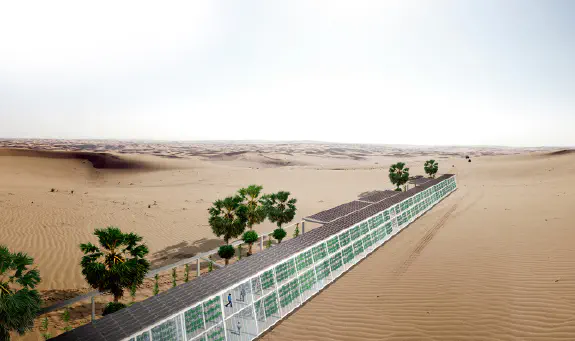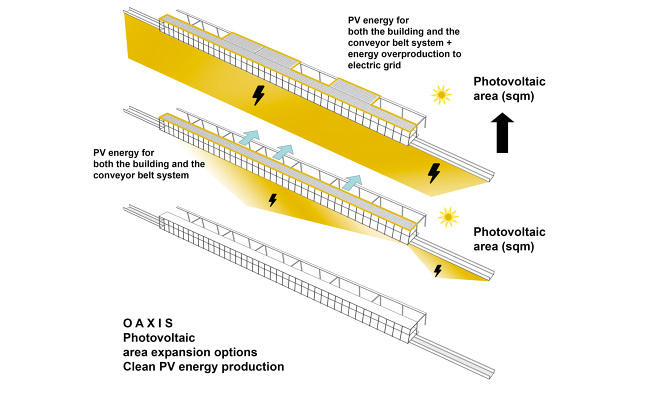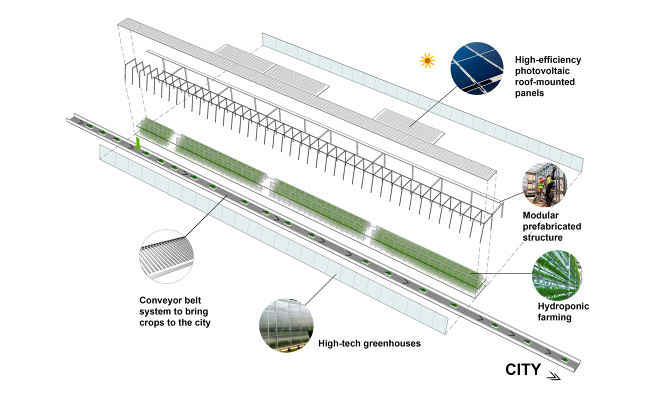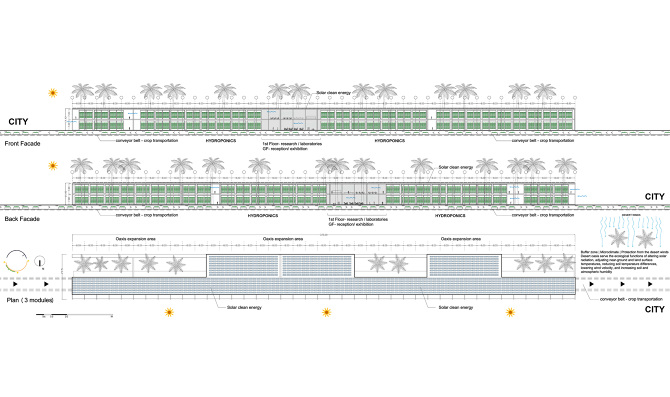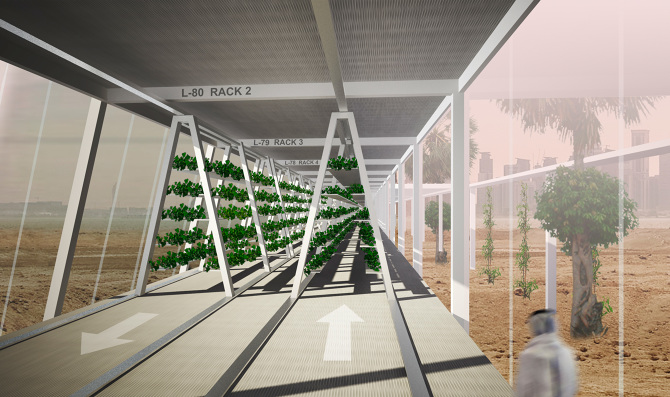Main concepts
As designers and technicians, we shouldn’t talk about design, processes or sustainability as isolated matters. What is interesting about a new design or building is the potentials and possibilities it creates in order to improve human life. The proposal addresses food production and consumption, it deals with cities self-sufficiency and connectivity , with the relationships between architecture and food insecurity within an ecosystemic vision.
People, nature, design and technology are combined in order to serve an specific function: produce fresh and quality local food with water saving technologies which can help reduce massive food imports in the Arabian Peninsula cities while creating a new attractive linear environmental HUB for farming technology research, pedagogical use and also open to locals and visitors.
” We were inspired by the desert Oasis morphology and use it as a reference for the project green transformation in time, but our objective is not to compete with nature and its amazing processes or with existing Oasis such as Al-Hasa. What we propose is a safe and controlled hydroponic facility based on a modular linear pattern, a city new “green A X I S”, which incorporates some of the qualities of a desert Oasis. It will produce Solar energy to become self-sufficient and capable of running an underground transportation system that deliver the crops directly to the cities, shortening long distance food transportation (imports) and therefore reducing CO2 emissions”
The OAXIS project facilities incorporate a prefabricated modular structure which uses recycled steel, which can be easily expandable to increase the footprint area if required (Solar plant and building construction). The project use local passive strategies to control the building’s environment and it also produces its own energy via a series of high-efficiency photovoltaic panels mounted on the roof-top, acting as a linear solar plant. The clean energy produced will be used for the buildings own consumption and for artificial LED lightning, but most notably, for running the underground conveyor belt system which will transport the produced hydroponic crop trays directly to the nearby city logistic station (minimum distance transport just inside the city area) . All the overproduced peak time energy will go to the city electric grid. The envisioned hydroponic farming system will significantly reduce irrigation requirements (by up to 80%) by controlling (and recycling) the water used, with less fertilizers, pesticides and a rapid growth year-round cycle (,in order to have efficient crop production. Part of the recycled water will be used for the exterior “Oasis” green transformation over time. OAXIS will install on top of the physical facility a computerized systems to control the environmental conditions and the conveyor belt crop transportation system.
Types of crops proposed (fresh vegetables ,herbs and fruits) :Potatoes, Thyme, Lettuce, Basil, Tomatoes, Strawberries, Rocket, Bell Pepper, Cherry Tomatoes

